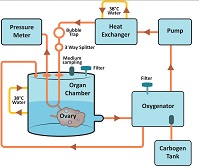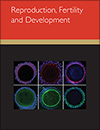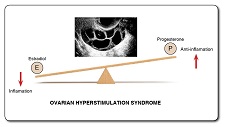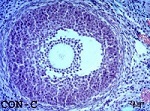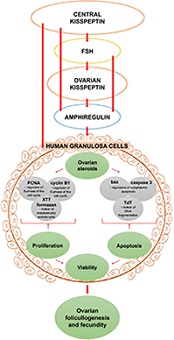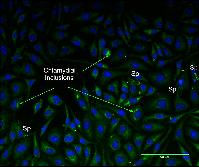Reproduction, Fertility and Development
Volume 34
Number 3 2022
Fertility preservation methods for prepubertal women about to undergo gonadotoxic chemo and/or radiation therapy are limited. Therefore, the aim of this study was to investigate the feasibility to develop an alternative fertility preservation method and describes for the first time the ex vivo maintenance of viable follicles of ewe ovaries with oocyte integrity and the retrieval of oocytes after ex vivo hormonal perfusion with two different protocols for up to 7 days.
This study aimed to predict ovarian hyperstimulation syndrome (OHSS) by suggesting that there may be a relationship between inflammation, oestradiol and progesterone. In conclusion, insufficient progesterone levels in OHSS can prevent the suppression of the exaggerated inflammatory process caused by high oestradiol levels, and neutrophil lymphocyte ratio and oestradiol progesterone ratio can be used to predict the development of OHSS in patients undergoing controlled ovarian hyperstimulation during in vitro fertilisation cycles.
Preserving fertility is one of the main goals of successful radiotherapy in terms of quality of life for oncological or haematological diseases. Capsaicin treatment before radiotherapy may be an acceptable therapeutic modality to prevent radiation-induced premature ovarian failure and has potential to be utilised in clinical application for fertility preservation.
Our results suggest intra-ovarian production and a functional interrelationship between amphiregulin (AREG), kisspeptin (KISS) and FSH in the direct regulation of basic ovarian cell functions. AREG and KISS at low and middle doses promoted cell viability, proliferation, progesterone, testosterone and estradiol, and inhibited apoptosis. KISS at high dose had the opposite effect. FSH stimulated AREG release, whilst the addition of KISS suppressed and even reversed this FSH effect. In addition, FSH mimicked and promoted the inhibitory effect of KISS on AREG release.
Transmission of Chlamydia pecorum infection has been assumed to be via the urogenital route. In an attempt to confirm this we investigated an in vitro method of Chlamydia infection using naturally infected koala semen to inoculate a cell line and attempt to estimate C. pecorum infectious load. Our study suggests that venereal transmission of C. pecorum infectious dose is possible and may be restricted to peak bacterial shedding in semen associated with recent infection.

